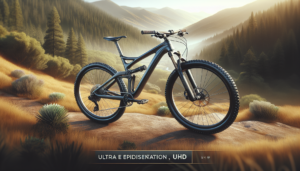Introduction to Cycling Safety
Cycling is a popular and healthy mode of transportation and recreation enjoyed by millions of people worldwide. However, it’s crucial for cyclists to prioritize safety to prevent accidents and injuries. Cycling safety involves following traffic laws, wearing protective gear, maintaining your bicycle, and practicing defensive riding techniques. By adhering to these guidelines, cyclists can greatly reduce their risk of being involved in a crash.
The Importance of Cycling Safety
Bicycle safety is paramount as cyclists are often vulnerable on the road, especially when sharing space with motor vehicles. In a collision between a bicycle and a car, the cyclist is much more likely to be injured or killed. Therefore, it’s essential for cyclists to take every precaution to protect themselves. This includes wearing a helmet, increasing visibility, obeying traffic signals, and riding predictably.
Taking cycling safety seriously not only keeps individual riders secure but also helps create a safer environment for all road users. When cyclists and motorists respect each other and follow the rules of the road, everyone’s risk of injury decreases. Promoting bicycle safety encourages more people to ride, which has numerous benefits for public health, the environment, and reducing traffic congestion.
Statistics on Bicycle-Related Accidents
The statistics on bicycle accidents underscore the importance of cycling safety. According to the National Highway Traffic Safety Administration (NHTSA), 1,105 bicyclists died in 2022 from preventable crashes. Over a ten-year period, bicyclist deaths increased by a staggering 37 percent.
Most cyclist fatalities occur in urban areas and during the warmer months when more people are riding. In 2021, 853 out of 1,230 bicyclist deaths involved motor vehicles. These grim figures highlight the risks cyclists face and the need for greater awareness and commitment to bicycle safety from everyone on the road.
Research shows that failing to yield is one of the leading causes of fatal bike crashes. Drivers must be alert and yield to cyclists when turning or entering a roadway. They should also give cyclists ample space when passing and avoid opening car doors into the path of oncoming riders. By understanding common dangers, both cyclists and motorists can help prevent tragic accidents.
Essential Gear for Safe Cycling
One of the most effective ways for cyclists to stay safe is by wearing the proper protective gear. A helmet is the single most important piece of safety equipment for preventing head injuries in the event of a crash. High-visibility clothing and accessories also play a key role in keeping riders secure by making them more noticeable to drivers.
Choosing the Right Helmet
When selecting a bicycle helmet, ensure it meets the safety standards set by the Consumer Product Safety Commission (CPSC). Look for a helmet that fits snugly but comfortably and cannot slide around on your head. It should sit level on your head and cover your forehead.
The straps should form a “V” under each ear and fasten securely under your chin. When choosing a helmet for a child, never buy one that is too big with the intention that they will “grow into it.” A poorly-fitting helmet will not provide adequate protection. The Bicycle Helmet Safety Institute offers comprehensive guidance on sizing and fitting helmets for cyclists of all ages.
High-Visibility Clothing and Gear
To increase visibility on the road, cyclists should wear bright or fluorescent clothing during the day and reflective materials at night. Brightly colored jackets, vests, and helmets help riders stand out against the backdrop of traffic.
For riding after dark, equip your bicycle with front and rear lights and wear clothing with integrated reflective elements. Reflective ankle straps, arm bands, and vest also enhance visibility. The more noticeable you are to motorists, the lower your chances of being hit. By maximizing your visibility, you give drivers more time to see and react to your presence on the road.
Pre-Ride Safety Checks
Before each ride, it’s essential to inspect your bicycle to ensure it is in optimal working condition. Regular bicycle maintenance not only extends the life of your bike but is also critical for your safety. Failing to identify and correct mechanical issues can lead to accidents and injuries.
Inspecting Your Bicycle
Start your pre-ride check by examining the tires for proper inflation and any signs of excessive wear, cuts, or embedded debris. Underinflated or damaged tires can cause blowouts and loss of control.
Next, check that the quick release levers on the wheels are properly closed and secure. Spin the wheels to confirm they are straight and do not rub against the brake pads or frame.
Test the brakes by pulling the levers and ensuring the pads grip the rims firmly and evenly. The levers should not touch the handlebars when fully applied. Inspect the brake cables for fraying or stretching.
Finally, lift the bike a few inches and drop it to the ground. Listen for any rattling or loose parts. Check that all accessories are attached securely and that there is no damage to the frame, handlebars, or seat.
Ensuring Proper Bicycle Fit
Riding a bicycle that is the wrong size or not adjusted to fit your body can make it harder to control and more dangerous in traffic. A properly fitted bicycle enhances your comfort, power, and handling.
To find the right frame size, straddle the top tube of the bike with your feet flat on the ground. There should be 1-2 inches of clearance between your body and the frame. The seat height should allow your knee to be slightly bent when the pedal is at its lowest position.
Adjust the seat forward or back so that your knee is directly over the pedal spindle when the crank arms are parallel to the ground. The handlebars should be at a comfortable height and width for your riding style and shoulder dimensions.
When gripping the handlebars, your elbows should be slightly bent, not locked. This allows for better shock absorption and steering control. If you are unsure about your bike fit, consider getting a professional fitting at a reputable bicycle shop.
Defensive Cycling Techniques
Defensive cycling is all about anticipating potential hazards and taking proactive measures to avoid them. By riding smart and staying alert, cyclists can navigate safely through traffic and reduce their risk of accidents. Defensive cycling techniques include being predictable, communicating your intentions, and positioning yourself for maximum visibility.
Staying Alert and Aware
The first rule of defensive cycling is to stay focused on the road and your surroundings at all times. Avoid distractions like listening to music, talking on the phone, or texting while riding. These activities take your eyes and ears off the road and greatly increase your chances of a crash.
Continuously scan ahead for obstacles, potholes, grates, or debris that could cause you to fall. Keep an eye out for turning vehicles at driveways and intersections. Watch for parked cars and the “door zone” along the side of the road.
Use your peripheral vision to monitor traffic behind and beside you. When riding in a group, communicate hazards to other cyclists using hand signals and verbal alerts. The more tuned in you are to your environment, the quicker you can react and avoid danger.
Using Hand Signals
Communicating your intentions to motorists and other cyclists is a key principle of defensive riding. Hand signals tell others what you plan to do so they can respond safely and predictably.
Before turning, point your arm in the direction you plan to go. To indicate a stop, extend your arm down at a 90-degree angle with your palm facing back. When slowing, extend your left hand out and down.
You can also wave your right hand at drivers to indicate they should go first at an intersection. Creating a courteous interaction encourages motorists to respect cyclists and share the road. Always signal well ahead of your turn or maneuver so others have time to notice and react appropriately.
Following Traffic Laws
Bicycles are considered vehicles under the law, and cyclists have the same rights and responsibilities as motorists on public roads. Following traffic laws is essential for cyclist safety and helps create a more predictable environment for all road users.
Riding in the Direction of Traffic
One of the most basic traffic laws for cyclists is to ride in the same direction as the flow of traffic. Riding against traffic, on the sidewalk, or the wrong way in a bike lane can be extremely dangerous. Motorists do not expect bicycles to approach from the opposite direction.
Riding with traffic makes you more visible and predictable. You can see signs, signals, and turning vehicles much easier. You are also in a better position to make eye contact with drivers and merge with traffic when needed.
The exception to this rule is when a one-way street has a dedicated bicycle lane that allows riding against motor vehicle traffic. These “contra-flow” lanes are marked and have signals to separate bicycles from oncoming cars.
Obeying Traffic Signals
Like motorists, cyclists must obey all traffic signs, signals, and pavement markings. This means coming to a complete stop at red lights and stop signs, even if there is no traffic present. Proceeding cautiously and yielding the right-of-way when required is crucial for cycling safety.
Wait for green lights to give you the right of way before entering an intersection. Be aware that in some areas, bicycles can trigger sensors to change the light. Look for pavement markings that indicate where to position your bicycle.
Use marked bicycle lanes when available and follow the directional arrows. When turning left, either merge with traffic and complete the turn as a vehicle, or dismount and cross as a pedestrian in the crosswalk.
Shoulder check, signal in advance, and yield to pedestrians and oncoming traffic before turning right. By being patient and obeying traffic signals, cyclists can navigate intersections safely and avoid conflicts with motorists and pedestrians.
Building Confidence and Skills
Developing solid bike handling skills and confidence in traffic are essential for safe cycling. The more comfortable and capable you are on your bicycle, the better equipped you will be to deal with unexpected situations and hazards. There are several strategies cyclists can use to build their abilities and assurance on the road.
Practicing in Low-Traffic Areas
If you are new to cycling or feeling anxious about riding in traffic, start by practicing in a safe, low-stress environment. Empty parking lots, quiet side streets, and dedicated bike paths are great places to hone your skills.
Practice starting, stopping, signaling, and turning in a controlled setting. Work on maintaining a straight line while scanning behind you. Get comfortable riding with one hand on the handlebars so you can signal turns.
Gradually increase your exposure to traffic by riding on streets with low speed limits and wide bike lanes. Take short trips to the store or to visit friends. The more time you spend cycling in various conditions, the more confident you will become.
Avoiding Sidewalk Riding
While it may feel safer, riding on the sidewalk can actually be more dangerous than riding on the road. Sidewalks are designed for pedestrians and are often narrow, uneven, and filled with obstacles like sign posts, benches, and fire hydrants.
Motorists are not expecting fast-moving bicycles to enter the roadway from the sidewalk, especially against the direction of traffic. Collisions can occur when cyclists ride off the sidewalk into the path of turning cars at driveways and intersections.
Pedestrians also have the right of way on sidewalks and may not hear a bicycle approaching from behind. Startling pedestrians can cause them to stumble or fall.
Instead of riding on the sidewalk, cyclists should use bike lanes or take the lane when necessary. Riding predictably and following traffic laws helps drivers anticipate and respond safely to cyclists on the road.
Resources for Cyclists
There are numerous resources available to help cyclists stay safe and informed. From online guides to local bike safety events, riders of all levels can find support and education to improve their skills and knowledge.
National Bike Month
May is National Bike Month, an annual celebration sponsored by the League of American Bicyclists. The event promotes the many benefits of cycling and encourages more people to try riding for transportation and recreation.
Throughout the month, communities across the country host bike safety rodeos, group rides, and commuter challenges. These events are a great way to meet other cyclists, learn safe riding techniques, and discover local bike routes.
The National Bike Month Guide offers tips and resources for cyclists, as well as promotional materials for organizing bike month events. By participating in National Bike Month activities, riders can demonstrate their commitment to cycling safety and help create a more bicycle-friendly culture.
Safety Programs and Guides
Many organizations offer free cycling safety programs and guides for riders of all ages and skill levels. The League of American Bicyclists’ Smart Cycling program teaches essential bike safety and handling skills through online and in-person classes.
The National Highway Traffic Safety Administration’s “Ride Smart, It’s Time to Start” campaign provides educational videos and materials on bicycle safety for adults and children. The Safe Routes to School initiative also offers resources and support for communities to improve cycling and walking safety for students.
Local bicycle advocacy groups and clubs often host bike safety workshops and events as well. Attending these programs and reading safety guides can help cyclists stay current on best practices and learn valuable tips for navigating specific riding environments.
By taking advantage of the wealth of cycling safety resources available, riders can arm themselves with the knowledge and skills to enjoy cycling with confidence. Prioritizing safety not only protects individual cyclists but also helps create a more vibrant and secure cycling community for all.






